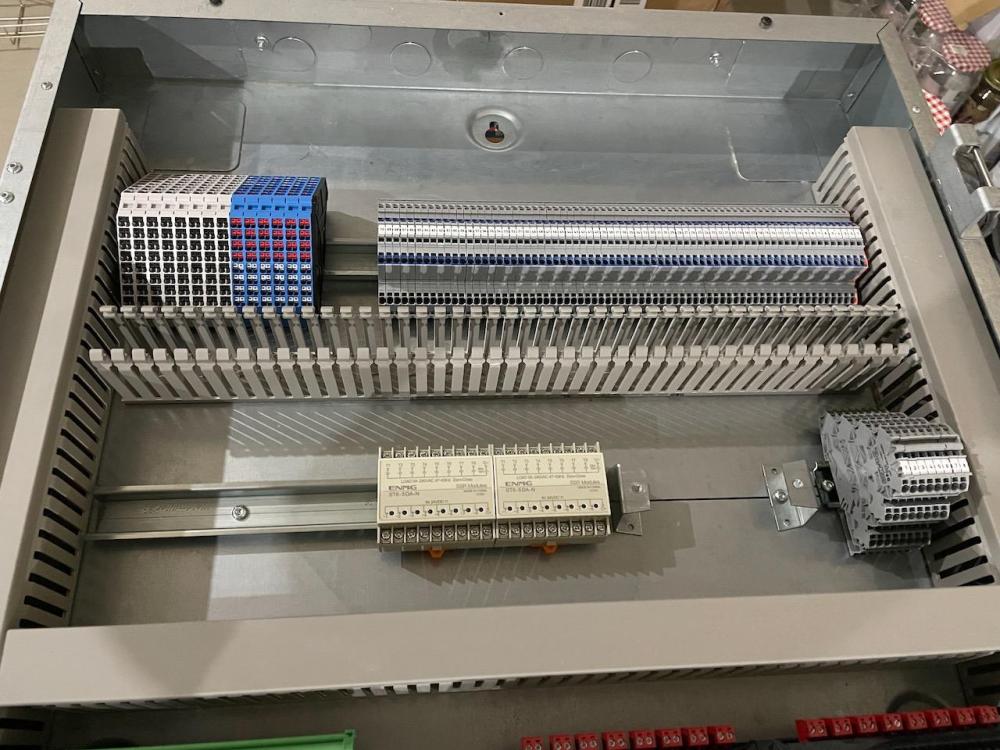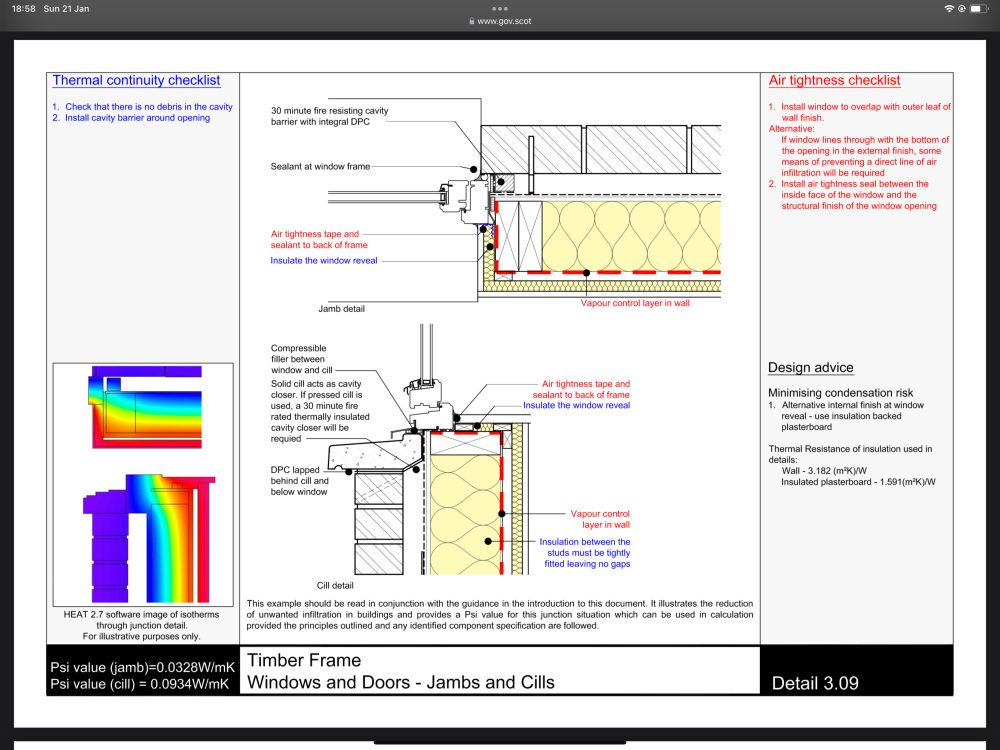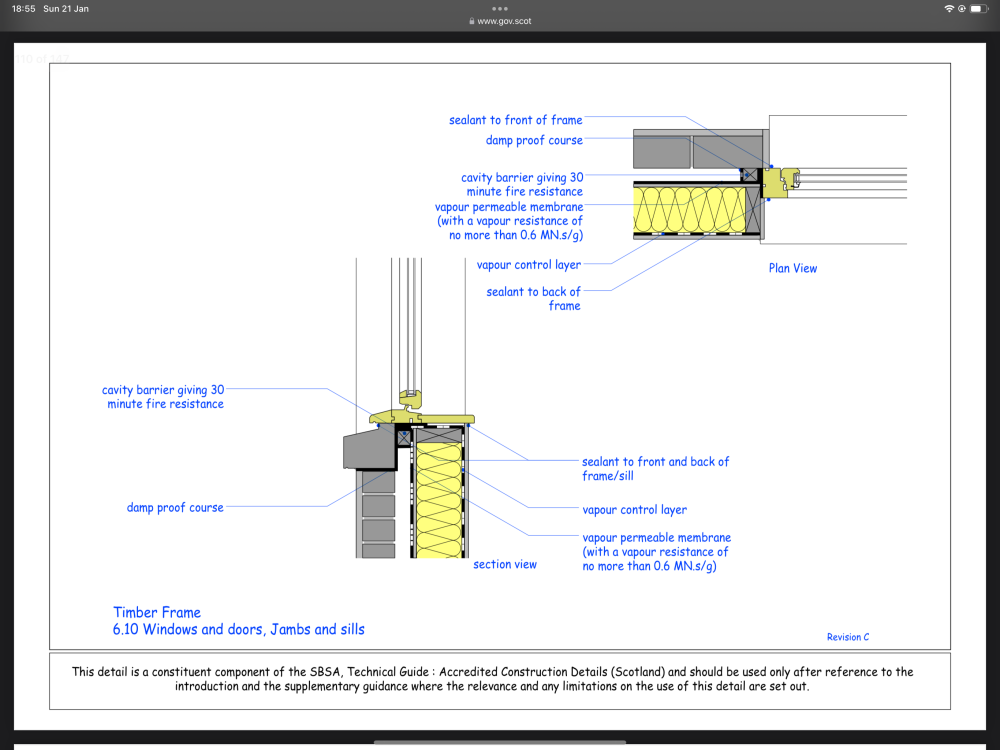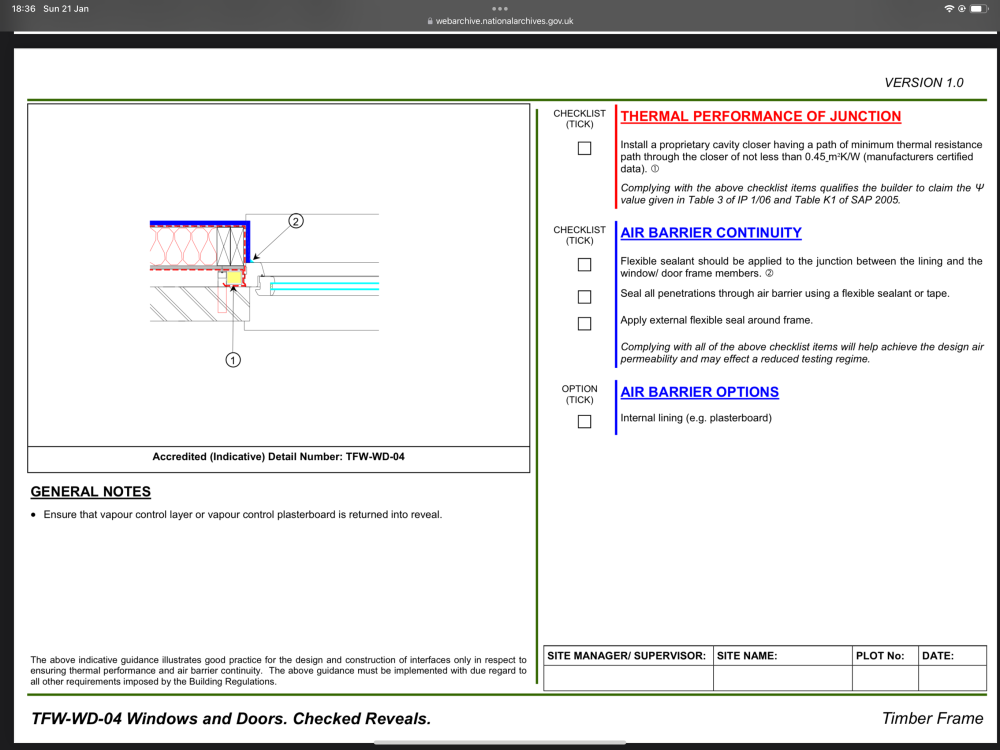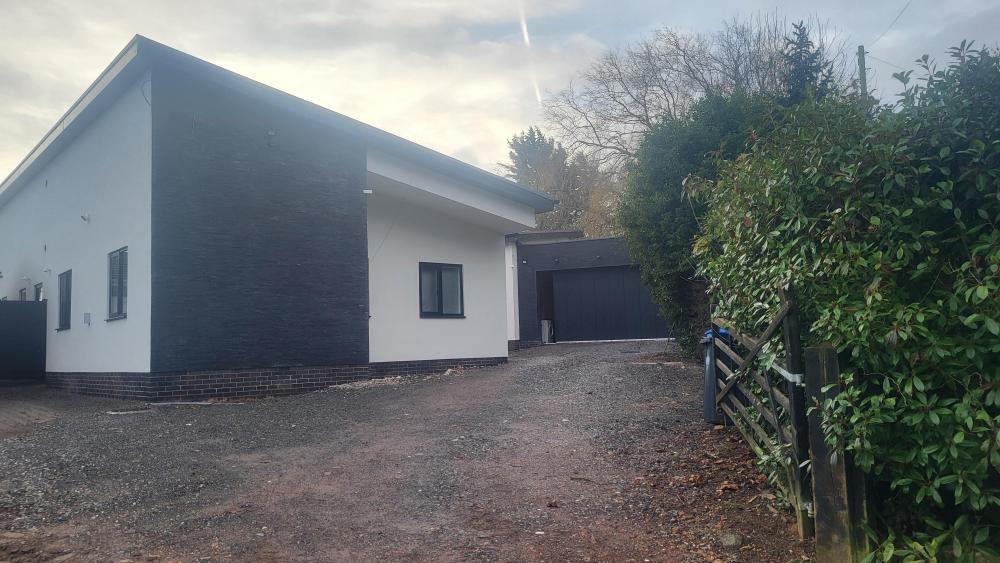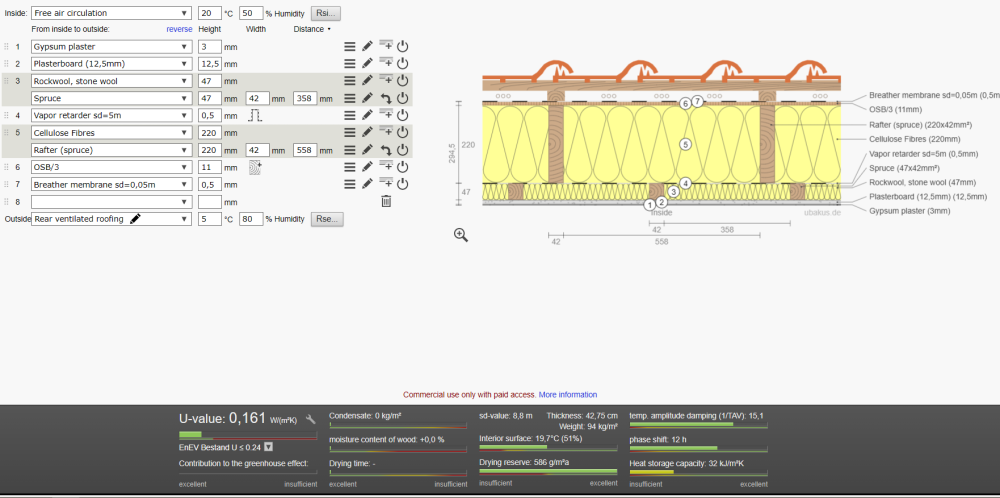Leaderboard
Popular Content
Showing content with the highest reputation on 01/21/24 in all areas
-
If payback was the only thing, I would not have spent £200K building a really nice house, I would have stayed in the static caravan and the £200K would have paid the very high heating bills of the static caravan for the rest of my life.3 points
-
Everything kicked off on January 8th 2024 finally after 8 years of faffing about and trying to line up finances, finding someone to sign off building regs and a year of selling the old house eventually succeeded. There was about 120 tons of muckaway judging from the number of trucks. The guys brought a 17 tonne digger and were glad of it. The big roller they didn't use in the end but went with a more compact diesel unit. hardcore was added and leveled. The trickier element was getting a rainwater harvesting tank installed. It had to go at the back of the site before we could block it off with the next phase of works. I found the office staff didn't have a clue about the dimensions so how deep to dig the hole?! They did the next best thing and sent a guy out to the yard with a tape measure and I passed these info on. The crane used was impressive - 350K worth to move a 4.5tonne concrete tank into position. They then crawled inside it to commission the pump etc and seal it up until the next phase of adding power (need to drill a hold into the tank but they provided enough electrical cable to go back to the house to hook it up later. It holds 4,000 litres and needed balast to stop it shifting as even at that weight it can move around!! Got a hose and friendly neighbours to assist and half filled it up!! Only 1 complainer - a neighbour around the corner giving out when the flatbed dropped off the excavator, there's always one! Did get a site inspection the next day but only to confirm we'd started within the terms of our commencement notice I think and he seemed friendly anyway! I left the mortgage a bit late, still waiting on approval so am spending cash currently. Hopefully that comes in this week! The Timber Frame prep is starting in their factory - I think I'll be ready in 5 weeks or so or on March 1st. Onto the exciting portion - Foundation Screws, 1.5 meter long and will have a 300mm x 300mm plate bolted to the top of the screw head. They spend an entire day prepping the holes, measuring and remeasuring to ensure everything was fine. There was some confusion around the height the screw was to end up but the groundworks team had marking the fence panel and I put them in direct contract with each other and didn't hear a peep from that point. All was good. I was hearing 100mm differences in the levels one day and this changed to 2mm the next!! I was sick with flu so not being able to be onsite was a curse, you just have to hope it works out. They pre drilled down to break up some rock but nothing too severe. The delivery took a bit longer than expected, so they started later than I'd hope which means I lose the groundsworks team for a week at the start of February but what can you do. Some start when they say, others, well, it's a moving target!! But once they started they've been onsite every day despite the cold weather and are making good progress. There are 89 of these to be driven in to a level set by the laser. They use an electric motor to drive in the screw with an arm braced against a previous screw they leave half way up. Eventually all you'll see is a field of square plates. A raft is to be poured around these and the Kore passive raft is being delivered to site later this week for use next month. Yep, there's a second raft going in on top of the Kore - like a Kore Concrete Raft Burger!! Enjoy the photos!2 points
-
Personally, I'd dry fit, flush and see, only because I've heard that rimless loo's have a tendency to splash/spray a bit, but individual mileage may vary. I don't think it hurts to do a test fit and trial.2 points
-
1 point
-
Instant modulation response, efficiency (directly and the exclusively heating the pan itself), better heating uniformity, ultra-quick water boiling, easy to achieve continuous simmering, no combustion byproducts, no direct fossil fuel use, much easier to clean… I was a gas evangelist until we switched to induction and capped off the gas supply; it’s a revelation, and I’d never go back to gas unless I didn’t have a choice. Note however: if you’re a big fan of authentic wok cooking, gas is still the only choice for now.1 point
-
started to finally put all the terminal blocks in. had to move the blind terminal blocks to the 2nd din rail in the end as there just wasn't the room for them on the first rail to also allow for the basement terminal blocks. I'm sure it'll be fine as they're flex rather than rigid cable. and I can run most of the Loxone relay cable up and under the raised din rail that is between the SSRs and blind TBs to save room up the right hand side trunking. I've numbered the 230V terminal blocks from right to left which looks a bit weird but it leaves room for expansion for them or the 8-ways if required and can then keep the numbers contiguous. bit frustrated that I now have to buy Weidmuller numbers for those 14 x 8-way blocks. I might just use my label printer though!1 point
-
1 point
-
1 point
-
It should be placed behind a vertical DPC to protect it and as far as I know fixed to the timber frame.1 point
-
Overspecify the voltage rating if you can and if there is room (don't change the capacitance value). Buy the highest spec which for mains is Y1. Buy from a big components supplier like Farnell who by and large don't sell components which give them returns. Worth buying a German brand e.g. Wima or Wuerth.1 point
-
As has been said, use this storm to inspect how damp the walls get. Generally you get it rendered down to 2 engineered blocks, which is where DPC is. I'd be tempted to use this storm and the damp near ground level to get the render trimmed back up. Not a great pic, but you can see where my dpc as the render stops, I have raised beds/driveway etc to go in yet!1 point
-
DPCs not placed correctly at the jambs. Open up a jamb and see how the DPCs have been placed.1 point
-
Have you got any pics of before installation? Or during construction?1 point
-
I agree with @twice round the block I can’t see any weather/water break between the paving and the building. Any water can be blown up the slope and directly against the build/render. Not even a break at the door1 point
-
1 point
-
With that amount of hard landscaping around the building the rain must be bouncing off it and and going above any dpc level you have. In your photo it shows a damp patch at ground level on the righthand side of the building. I'm concerned there is no gap around the building to act as a soakaway for any rain water. It's not normal to pave upto a building. A 200mm minimum gap is normally let and this is filled with pea shingle to aid water runoff. Is there a renderstop on the bottom edge of the render.?1 point
-
You'll get supporters for both types of insulation. I built a PH and used Icynene sprayed foam which gave me an airtightness of 0.47ACH without using any membrames or tapes. The reason I didn't use blown cellulose was because a friend had used it in her house and after a year it had slumped and she used an airtightness membrane but couldn't get below 1.0ACH. There is also blown mineral fibre, which was second on my list.1 point
-
There are dozens of things you could do to improve the efficiency of your build and, as you're finding, at some point you reach the point where you have to say "I'm just not going to do that". The key is to make sure you're doing the things that are most effective and being consistent with yourself, there's no point spending thousands extra on one aspect early on in the build and opting out of something else later on that was actually much more cost effective. I ended calculating a "pounds per W/K improvement" measure that I used to decide to make sure I was being consistent with myself across the project. If I was debating adding a new efficiency improvement (e.g. increasing insulation, introducing marmox thermoblocks on our masonry build, thermally broken lintels etc.) I would assess the impact of the money I was spending on the improvement to see if it was worthwhile. So in your example: A U-value of 0.14 over a 220sq m wall area, gives the heat loss through the wall as 30.8 W/K. A U-value of 0.11, gives you 24.2 W/K. So £6000 gives you 6.6 W/K improvement, meaning just over £900 per W/K. For info, my cut-off was somewhere around £350 per W/K (based on raw materials as we DIY'd a lot, I'm aware your figure is fully finished)1 point
-
I must have replaces hundreds of failed capacitors. Some makes of equipment are well known for it, and there is a steady market in capacitor kits for some common bits of equipment.1 point
-
PPPoE is for the Broadband/WAN connection and DHCP is for the LAN connection (The DMR is the gateway between the two) So, setting WAN to PPoE will not effect the the LAN side. If your phone has connected previously and you haven't disabled the DHCP Server on the DMR we can assume DHCP is still enabled. Since you are not familiar with DHCP, it's likely that your laptop is also on its default Network settings (ie. , but it's worth checking. Is teh Laptop set up to automatically configure it's Network settings. If so, then this is use DHCP to retrieve it's settings from the DMR. On a Windows machine, the TCP/IPv4 Properties for the Ethernet connection should be set as below Switch the Laptop Wi-Fi off and connect a network cable between laptop and Port 1, then reboot the laptop. Ref. https://www.4gon.co.uk/documents/User-Manual-4075916.pdf You should then be able to open a browser and type http://192.168.1.1 and land on the login page for the router.1 point
-
Hello everyone, I bought a Solic 200 device in the summer of 2020, in the spring of 2021 it started to malfunction, I contacted the company and was asked to send the device for repairs, which I refused given that I live in Romania and the costs of transport and customs they would have been exorbitant compared to the price of the device! The company offered to sell me a new product at a discounted price of £100, which I accepted but about 2 weeks ago and the latter started to have the same problem as the first one, it restarts continuously until the moment when only the first LED lights up in orange, both red and green LEDs work at the same time. I considered that it is not normal to pay for a new one, given that the operating time is short and I investigated what the problem is, having enough knowledge of electronics to find the problem I found a fixed capacitor, C1, which is right next to the plug of the current transformer, with half the value of the normal one . This fixed capacitor has the role of lowering the mains voltage to a value necessary to power the device's control electronics, its value being too low, the supply voltage is too low and the device does not work I changed this capacitor and everything returned to normal I am attaching a video with the initial behavior and a photo with the respective capacitor 27dc8aff-3f00-489a-b210-eeb4999716f9.mp41 point
-
I'd assume it would need planning permission, and highways / LA will be informed through that process. You'll likely need an SE to advise on the methodology.1 point
-
Surely the fact I've haven't even the gumption to join automatically qualifies me?1 point
-
It's interesting that payback period is one of those things so often raised as a problem when it's down to spending on the fabric of the building or the heating system, but never gets a look in when it comes to a bathroom, kitchen or some other internal home improvement. Yet from a daily living perspective it's worth so much more. Everyone who visits our house for the first time, especially in the winter remarks on how comfortable and warm it is - which I explain is because it is well insulated and doesn't have any draughts. Is that worth the just the extra £10k I decided to spend on insulation? Absolutely.1 point
-
Also have to concider location and building form factor, also some people live in colder locations, so payback is different. If you are doing UFH get yourself down to 0.1, to mitigate downwards heat loss. And the roof is generally quite cheap to get down to 0.1 also. All things house related are not about pay back period. If you built all houses based on payback we would all live in tents. You mean 0.14/0.151 point
-
1 point
-
A narrow trench each side with coarse clean stone, and ensure the surface is cambered when its redone. If its flat, it will never last.1 point
-
My point was, and is, the effects of artifically raising prices will be socially and politically unacceptable for the reasons i already stated. Anyone suggesting that as a route forward should maybe consider their moral compass? I would be 80 by then, so resonable chance i wont make it anyway. Maybe you read a different article to me? Either way, its not a future im looking forward too.1 point
-
1 point
-
I got permission for a soakaway at 4m. There wasn't any alternative, the original architect had messed it up, and the bco agreed it was OK in the circumstances. There's nothing magic happens at these distances but it may depend on site circumstances.1 point
-
The best way of preventing sound leaking through recessed ceiling lights is... not to have recessed ceiling lights. Do something more creative instead. The second best way is to create a sealed box from one or two plasterboard / plywood for them to sit in, or to use a substantial commercial hood.1 point
-
i'm done with them now, so just cover the shipping. DM your details over and i'll pinch a small box on Monday and get them over to you. let me know if you have a preferred courier.1 point
-
There should be no issues with fitting the layer of boards above the rafters. These can be butted together and joints taped. Over these boards there should be a membrane and counter battens parallel with the rafters. Regular horizontal battens go on to of these. This construction is known as a warm roof (not to be confused with a warm loft). It's what I would build if building again but not all builders are familiar with this approach. It is quite a bit of work to fit boards between the rafters but my builder didn't complain and I bet my roof is more complicated.1 point
-
The Kingspan Salesman gets another set of new gold plated golf clubs! Such laziness by design professionals to just copy and paste a commercial companies detail and unquestioning pass it onto the customer. Correctly done I'd have no issue with spray foam. It depends on the situation. @Gone West got passivhaus airtightness just with open cell foam on his first house but there was 300mm+ of it. However. I'd just use blown cellulose. I'm a big fan. Great for ease of install, airtightness, decrement delay (summer heat protection), fire performance, off gassing, emboddied carbon, noise isolation. Here's a very buildable detail.1 point
-
We did open cell foam. You need a vapour control layer inside (fully taped) inside and a breather membrane to the outside. Our roof had sarking boards and the membrane the breather membrane above. Don't believe the hype saying it's airtight - because it isn't. Get an interstitial condensation report done prior to agreement. At least you have the paperwork to say there is no issues with the design. Mortgage issue is a different thing anyway. That is mostly a bodge done with a vapour closed foam, to make a poor roof seem good.1 point
-
I have rimless with no attenuation . It can splash a tiny bit - but no real issue when you consider all the piss and shit covering the floor anyway .0 points
-
Just read the title - didn’t see the sills, cills and reveals bit… *read the question before answering* and stop just looking at the pictures 🙈0 points
-
0 points
-
If you were a proper tiler you'd know they were called "rips". Anyway, it was poor planning not poor measuring! What a fiddly, pita they are to do as well!0 points
-
You forgot rule 3 3. Measure floor to ceiling height and align tiles so that you don’t have a crappy slither at the top .0 points

